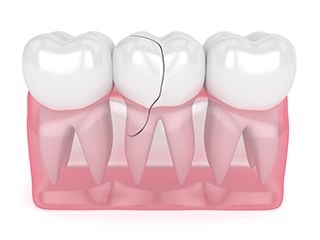 Even though enamel is the hardest substance in the body, teeth aren’t indestructible, and chipped, cracked, and broken teeth are among the most common dental injuries. Tooth fractures might result from accidents, trauma, tooth grinding, chewing hard objects and foods, or extensive decay.
Even though enamel is the hardest substance in the body, teeth aren’t indestructible, and chipped, cracked, and broken teeth are among the most common dental injuries. Tooth fractures might result from accidents, trauma, tooth grinding, chewing hard objects and foods, or extensive decay.
Tooth injuries can cause self-consciousness, sensitivity, and pain. More serious fractures can lead to infection and further damage to the tooth and its surrounding tissues. Depending on the extent of the injury to your tooth, there are several options available for restoring its appearance and function.
- Reattachment
It may be possible to reattach a broken tooth fragment if the damage is not too severe and you act promptly. Call your dentist for instructions on how to preserve the tooth fragment and make an appointment for treatment as soon as possible.
- Contouring
Contouring is used to repair minor cosmetic damage caused by small chips. The jagged or uneven edge of the enamel is gently reshaped with a drill or laser, and then the edge is polished for a smooth, even appearance.
- Bonding
A tooth with a small chip or crack could be a good candidate for bonding. A tooth-colored composite resin is applied to the damaged area with an adhesive, molded to shape, and then hardened with a curing light.
- Veneer
Veneers are popular options for restoring front teeth with chips and minor cracks. A veneer is a thin, tooth-colored shell made of porcelain or composite resin. The damaged tooth is shaped to accommodate the veneer at a first appointment, and an impression of the tooth is taken. A veneer is custom fabricated from this impression. At a second appointment, the tooth’s front surface is prepped and the veneer is bonded to the tooth.
- Onlay
An onlay restores a molar or premolar when one or more cusps have cracked or broken. Because an onlay is placed only on the center and any damaged cusps of the tooth, it preserves more of the natural tooth than a crown. The injured tooth is cleaned and shaped, and an impression is made which will be used to fabricate the onlay at a dental lab. The onlay will be bonded to the tooth at a second appointment.
- Crown
If too much of the tooth structure is damaged or missing, a crown can restore the tooth’s appearance and function. The injured tooth is shaped and prepared, an impression is made, and a crown is custom fabricated to cover and protect the remaining tooth structure. If the pulp is damaged, a root canal is usually necessary to save the tooth before the crown’s final application.
- Extraction
If the tooth has lost too much structure, if a crack extends below the gum line, or if a root is broken, extraction might be necessary. A dental implant after extraction is often the best treatment for long-term dental health. Implants can prevent shifting in the surrounding teeth, difficulties with eating and speaking, and loss of bone beneath the missing tooth.
Any injury to a tooth should be treated promptly to prevent possible infection and further damage to the tooth and the tissues around it. If you suffer any kind of dental trauma, call your dentist right away to discover the best options for restoring the health and appearance of your smile.
